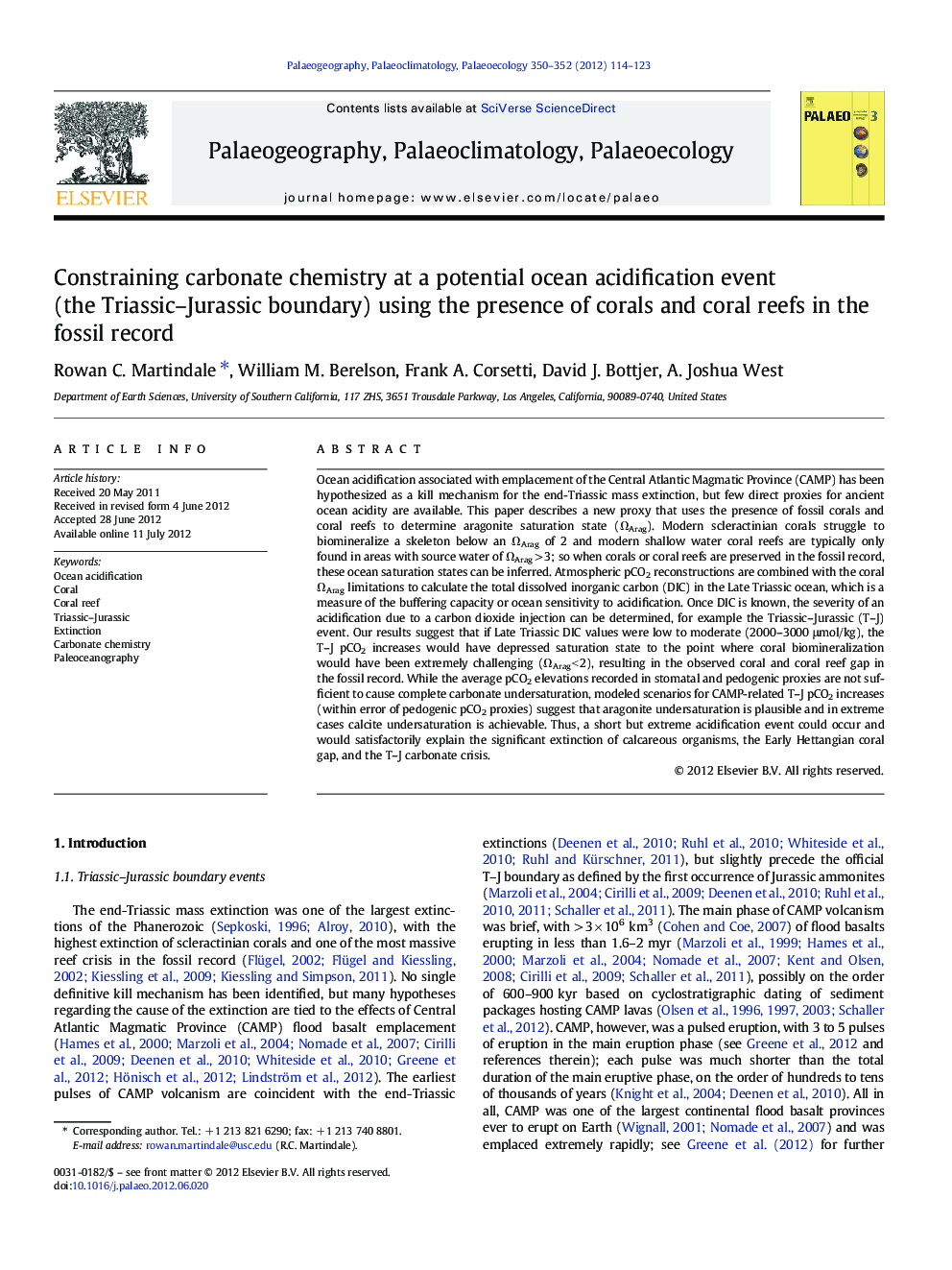| کد مقاله | کد نشریه | سال انتشار | مقاله انگلیسی | نسخه تمام متن |
|---|---|---|---|---|
| 4466823 | 1622225 | 2012 | 10 صفحه PDF | دانلود رایگان |

Ocean acidification associated with emplacement of the Central Atlantic Magmatic Province (CAMP) has been hypothesized as a kill mechanism for the end-Triassic mass extinction, but few direct proxies for ancient ocean acidity are available. This paper describes a new proxy that uses the presence of fossil corals and coral reefs to determine aragonite saturation state (ΩArag). Modern scleractinian corals struggle to biomineralize a skeleton below an ΩArag of 2 and modern shallow water coral reefs are typically only found in areas with source water of ΩArag > 3; so when corals or coral reefs are preserved in the fossil record, these ocean saturation states can be inferred. Atmospheric pCO2 reconstructions are combined with the coral ΩArag limitations to calculate the total dissolved inorganic carbon (DIC) in the Late Triassic ocean, which is a measure of the buffering capacity or ocean sensitivity to acidification. Once DIC is known, the severity of an acidification due to a carbon dioxide injection can be determined, for example the Triassic–Jurassic (T–J) event. Our results suggest that if Late Triassic DIC values were low to moderate (2000–3000 μmol/kg), the T–J pCO2 increases would have depressed saturation state to the point where coral biomineralization would have been extremely challenging (ΩArag < 2), resulting in the observed coral and coral reef gap in the fossil record. While the average pCO2 elevations recorded in stomatal and pedogenic proxies are not sufficient to cause complete carbonate undersaturation, modeled scenarios for CAMP-related T–J pCO2 increases (within error of pedogenic pCO2 proxies) suggest that aragonite undersaturation is plausible and in extreme cases calcite undersaturation is achievable. Thus, a short but extreme acidification event could occur and would satisfactorily explain the significant extinction of calcareous organisms, the Early Hettangian coral gap, and the T–J carbonate crisis.
► This paper describes a new proxy for ancient ocean aragonite saturation state.
► Presence of corals and reefs allows ocean DIC to be estimated.
► The earliest Jurassic ocean was likely too acidic for corals to biomineralize.
► Proxy data does not predict CaCO3 undersaturation (Ω < 1), although it is possible.
► T–J acidification would explain the extinction, coral gap, and carbonate crisis.
Journal: Palaeogeography, Palaeoclimatology, Palaeoecology - Volumes 350–352, 15 September 2012, Pages 114–123